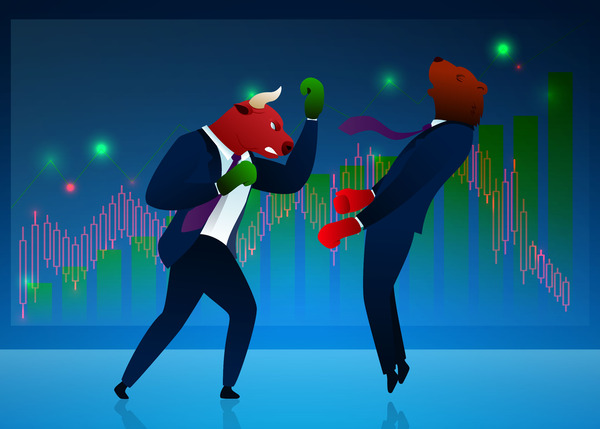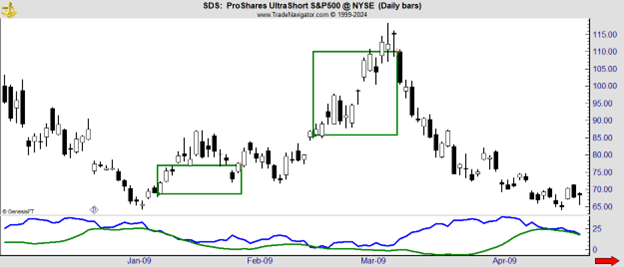Last week I wrote that in chaotic markets, prediction is fragile but process is durable. That idea had me looking back at how my proprietary indicator signal – called the ITV Indicator – performed during a well-known chaotic period, the 2008–2009 bear market.
You probably remember 2009. Investors were terrified in the first few weeks of that year. SPDR S&P 500 ETF (SPY) dropped nearly 29% before finally bottoming on March 6, the end of a brutal bear market that wiped out more than 55% of the index in just over a year and a half.

Could that happen again? It doesn’t seem likely, but it’s never impossible.
Even if the index doesn’t fall that far, a bear market is always something to keep in mind. Fortunately, investors don’t have to sit on the sidelines when markets turn lower. The truth is, there’s always a bull market somewhere.
Consider what happened during that last bear market. The chart below shows an inverse ETF—ProShares UltraShort S&P 500 ETF (SDS). The green boxes mark trades my system identified. The first gained 11.5%. The second 24.3%. In other words, while nearly everyone else lost money, these trades offered a way to win.

That’s the advantage of having a disciplined strategy. My rules are hard-coded into my system and designed to uncover opportunities in any market environment. Whether it’s a pullback or a prolonged downturn, the framework doesn’t change; it simply adapts to the conditions.
Inverse funds are especially useful tools in those periods. These funds are built to deliver returns that move opposite to an index. SDS, for example, is leveraged to return twice the inverse of the S&P 500’s daily performance. Other funds track the Nasdaq 100, the small-cap Russell 2000, or even individual sectors and international markets.
Because these funds use derivatives to match daily performance, they’re not long-term holdings. Over time, compounding and tracking errors can create distortions, meaning a market could fall and the inverse ETF might still lose value. But in the short term, when used properly, they’re powerful tools for active traders.
That’s what makes markets so dynamic: no matter how bleak the headlines get, there’s always movement, and movement creates opportunity.
Right now, we’re still in a bull market, though it feels like a period of transition. The market’s recent swings may be unnerving, but history reminds us that even in extended losing streaks, the story doesn’t always spell disaster.
Since 1900, there have been only 11 occasions during which the Dow Jones Industrial Average fell for nine straight sessions. Those periods included the 1907 panic, the 1931 European banking crisis, the 1941 invasion of Yugoslavia and Greece, and the 1958 Eisenhower recession. Each was a unique chapter of market stress, but none lasted forever.
Whether this period becomes a deeper correction or just another pause in an extraordinary bull market, the principle remains the same: a sound strategy is what carries investors through. Markets may shift, leadership may change, and narratives may evolve, but disciplined rules and a methodical approach will always uncover the next opportunity.





